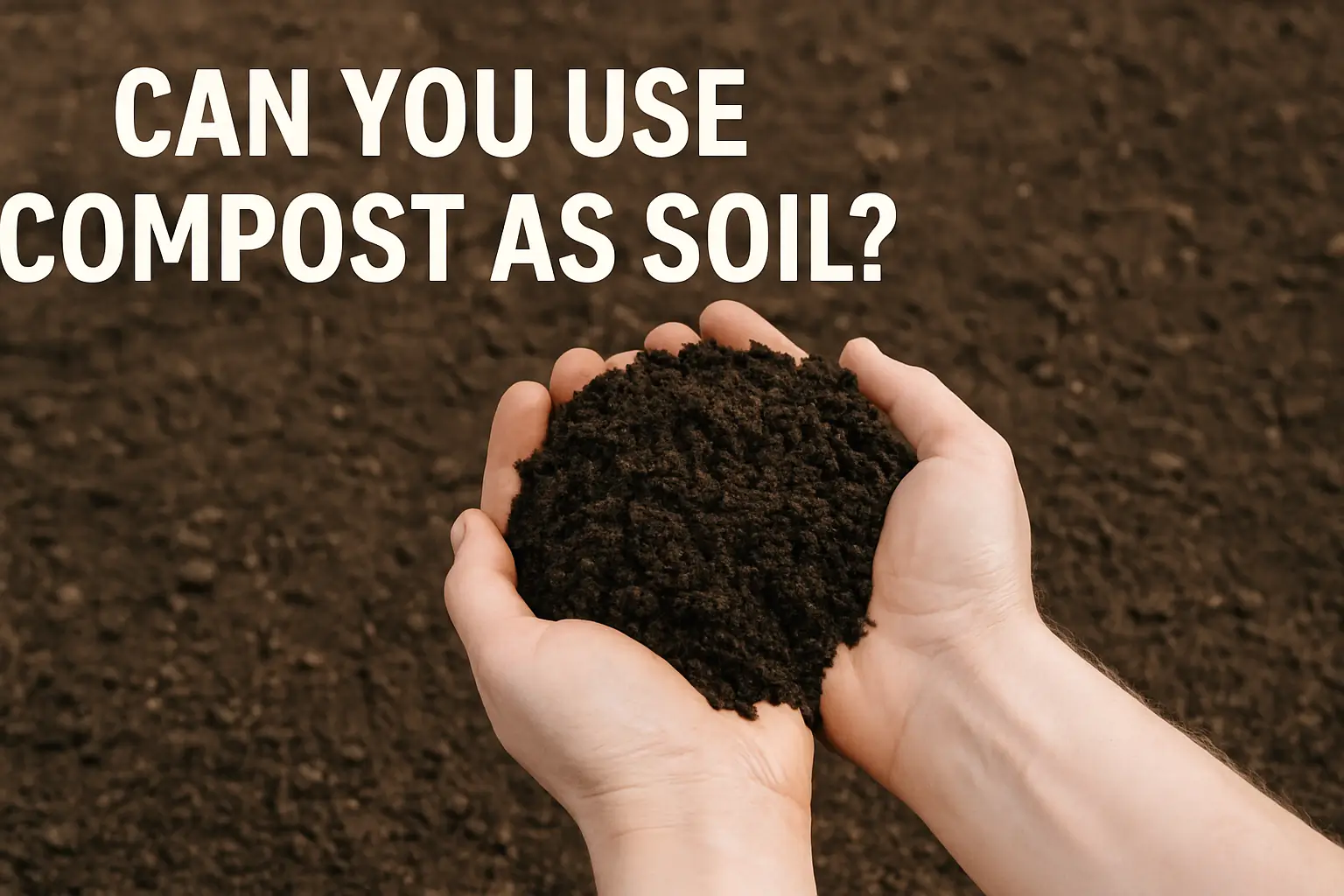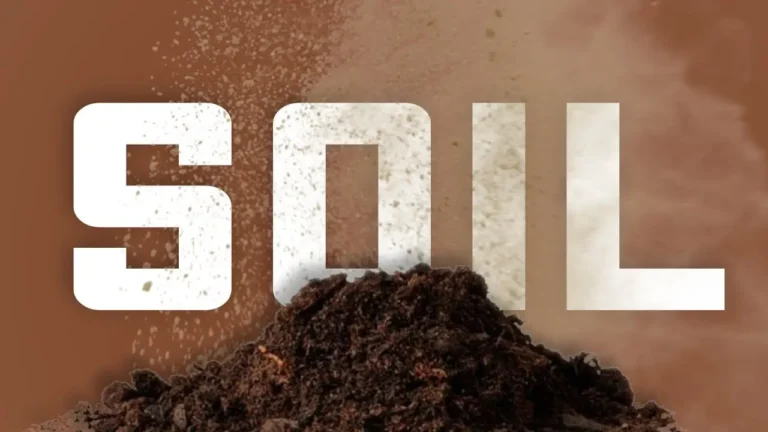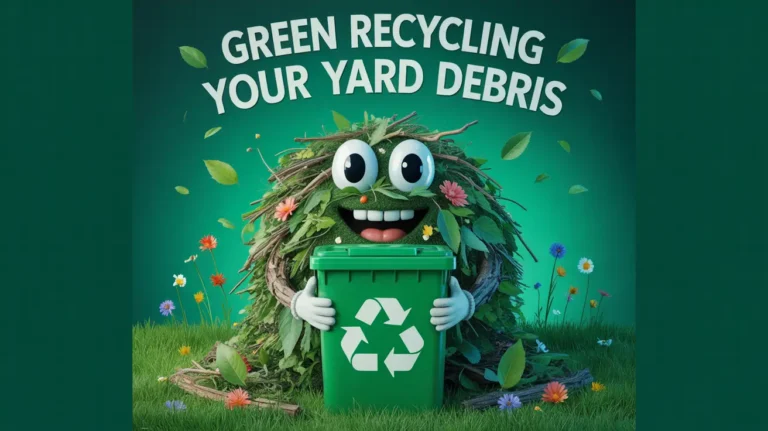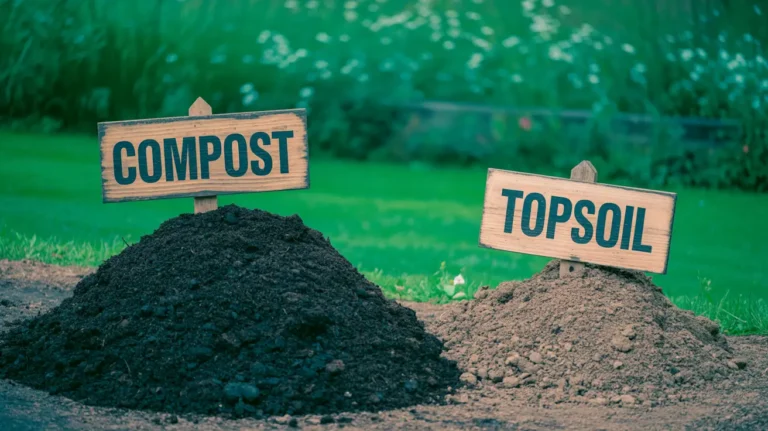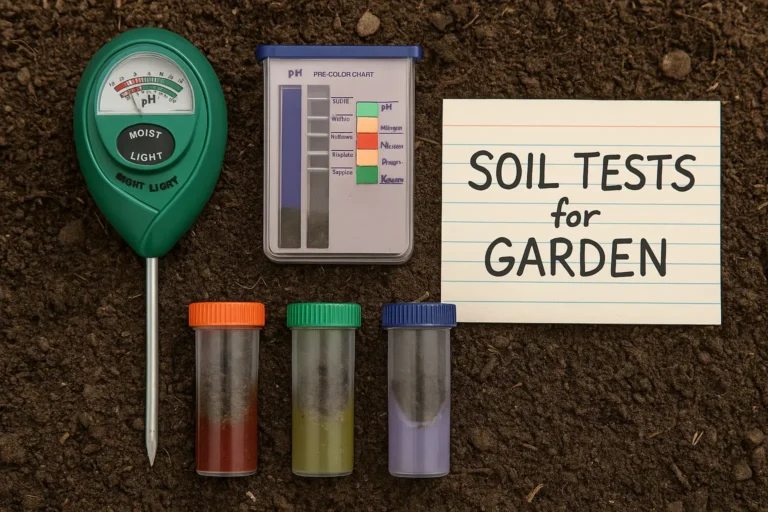Can You Use Compost as Soil? The Complete Guide to Growing Success
Transform your garden with the power of compost – but are you using it correctly?
Every passionate gardener has wondered whether they can skip the soil entirely and plant directly into their rich, dark compost. After all, compost is often called “black gold” for good reason. It’s packed with nutrients, teeming with beneficial microorganisms, and represents the ultimate recycling success story.
But here’s the critical question that determines your garden’s success: Can you actually use compost as soil?
The answer isn’t as straightforward as you might think. While certain plants can thrive in pure compost under specific conditions, most gardening experts strongly advise against using compost as a complete soil replacement. This comprehensive guide will reveal exactly when, why, and how to use compost effectively for maximum garden success.
Understanding the Fundamental Differences: Compost vs. Soil
Before diving into whether compost can replace soil, it’s essential to understand what makes these two growing mediums fundamentally different.
Soil is primarily mineral-based, consisting of sand, silt, and clay particles that have formed over thousands of years. It provides structural stability, anchors plant roots, and contains essential minerals that plants need. Quality topsoil typically contains 20-30% organic matter mixed with these mineral components.
Compost, on the other hand, is 100% organic matter – the decomposed remains of once-living materials like kitchen scraps, leaves, grass clippings, and garden waste. It’s biologically active, nutrient-rich, and incredibly beneficial for plant growth when used correctly.
The key difference lies in their structure and stability. Soil provides a permanent foundation, while compost continues to decompose and settle over time. This ongoing decomposition process is both compost’s greatest strength and its primary limitation as a soil replacement.
When You CAN Use Compost as Soil Successfully
While experts generally recommend against using pure compost as soil, there are specific situations where this approach can work beautifully. Understanding these conditions is crucial for success.
The Perfect Candidates: Low-Growing, Acid-Loving Heavy Feeders
Certain plants actually thrive in pure compost environments. These successful candidates share several key characteristics:
Heavy feeders like tomatoes, peppers, squash, cucumbers, and zucchini have enormous appetites for nutrients. They grow rapidly and produce abundant harvests, which means they can quickly utilize the rich nutrient content in compost before any negative effects occur.
Acid-tolerant plants perform well because fresh compost tends to be slightly acidic (pH 5.5-6.5), gradually becoming more neutral as it matures. Plants like blueberries, azaleas, and the vegetables mentioned above actually prefer these slightly acidic conditions.
Low-growing, spreading plants work best because they don’t require the structural support that tall plants need. Compost’s light, fluffy texture can’t anchor deep roots or support heavy, tall plants effectively.
Mature Compost Requirements
For pure compost growing to succeed, your compost must be fully mature. Here’s how to identify ready-to-use compost:
Visual indicators: Mature compost appears dark brown to black, with a crumbly, soil-like texture. You shouldn’t be able to identify original materials – no visible food scraps, leaves, or other organic matter.
Smell test: Finished compost has a pleasant, earthy aroma reminiscent of forest floor. Any sour, ammonia-like, or unpleasant odors indicate the compost isn’t ready for planting.
Temperature check: Stick your hand deep into the compost pile. Mature compost feels cool to the touch, while active compost generates heat from ongoing decomposition.
Steam and vapor: Fully decomposed compost won’t produce visible steam or vapor, unlike active compost which continues to “breathe” as microorganisms work.
Why Most Plants Struggle in Pure Compost
Understanding why compost-only growing fails for most plants helps explain why the soil-compost combination works so much better.
Structural Instability Issues
Compost lacks the structural integrity that soil provides. Its light, fluffy nature means:
Poor root anchorage: Tall plants like corn, sunflowers, or even mature tomato plants can’t establish strong enough root systems to prevent toppling.
Excessive settling: Compost can shrink by up to 60% within a single growing season as decomposition continues, potentially exposing roots or creating uneven growing surfaces.
Inadequate weight distribution: Container gardens using pure compost may become top-heavy and unstable, especially with larger plants.
Moisture Management Challenges
Compost presents a paradox when it comes to water management:
Excessive water retention: While compost acts like a sponge, holding moisture well, it can become waterlogged in heavy rain or with overwatering, leading to root rot.
Rapid moisture loss: Conversely, compost’s open structure with numerous air pockets means it can dry out quickly during hot weather, stressing plants.
Inconsistent moisture levels: Without soil’s moderating influence, moisture levels in pure compost can fluctuate dramatically, creating stress for plants that prefer consistent conditions.
Nutrient Complications
Ironically, compost’s nutrient richness can sometimes work against successful plant growth:
Nitrogen tie-up: If compost isn’t fully mature, active microorganisms continue consuming available nitrogen, potentially starving plants during critical growth periods.
Nutrient imbalances: While compost provides excellent organic matter, it may lack specific minerals that plants need, particularly calcium, magnesium, and trace elements naturally found in soil.
pH fluctuations: As compost continues to decompose, pH levels can shift, potentially moving outside the optimal range for certain plants.
The Science Behind Successful Compost-Soil Combinations
The magic happens when compost and soil work together synergistically. This combination leverages the strengths of both materials while minimizing their individual weaknesses.

Optimal Mixing Ratios
Research shows that soil health improves dramatically with surprisingly small amounts of compost:
The 25% rule: For most applications, mixing 25% compost with 75% quality soil provides excellent results without overwhelming the soil structure.
The 5% minimum: Even adding just 5% compost to existing soil can significantly improve soil biology, nutrient availability, and water retention.
Container growing: For raised beds and containers, a 33% compost to 67% soil ratio often yields exceptional results, as discussed in our guide to the best soil for raised beds.
How Compost Enhances Soil Performance
When properly incorporated, compost transforms soil in remarkable ways:
Improved soil structure: Compost acts as a natural soil conditioner, helping clay soils drain better and sandy soils retain more moisture and nutrients.
Enhanced microbial activity: The billions of beneficial microorganisms in compost establish a thriving soil ecosystem that continues to benefit plants long after application.
Natural pH buffering: Compost helps moderate soil pH, making nutrients more available to plants and reducing the need for chemical pH adjustment.
Slow-release nutrition: Unlike synthetic fertilizers, compost releases nutrients gradually as it continues to decompose, providing sustained nutrition throughout the growing season.
Practical Applications: Making Compost Work for You
Now that you understand the science, let’s explore the most effective ways to incorporate compost into your gardening practice.
The No-Dig Method: Compost as Soil Amendment
This increasingly popular technique involves applying a thick layer of compost directly on top of existing soil without digging or tilling:
Timing: Apply compost in fall to allow winter weather and soil organisms to naturally incorporate it into the existing soil structure.
Depth: Use 2-4 inches of compost, depending on your soil quality and plant requirements.
Benefits: This method preserves soil structure, feeds soil organisms, and reduces labor while improving growing conditions.
Compost in Container Gardens
Container growing offers unique opportunities for compost use:
Base layer drainage: Place a thin layer of coarse compost in the bottom of containers to improve drainage while providing nutrients.
Growing medium: Mix compost with high-quality potting soil rather than garden soil, which can become compacted in containers.
Top dressing: Apply fresh compost to the surface of container gardens monthly during the growing season for continuous nutrition.
Seasonal Compost Strategies
Different seasons call for different compost applications:
Spring preparation: Incorporate aged compost into planting beds 2-3 weeks before planting to allow soil biology to stabilize.
Summer maintenance: Use compost as mulch around established plants to conserve moisture and provide slow-release nutrients.
Fall soil building: Apply fresh compost to garden beds after harvest to decompose over winter and improve soil for the following season.
Troubleshooting Common Compost-as-Soil Problems
Even experienced gardeners encounter challenges when using compost. Here’s how to identify and solve the most common issues.
Addressing Nitrogen Deficiency
Symptoms: Yellowing leaves, stunted growth, poor fruit development despite rich compost application.
Cause: Immature compost continuing to decompose consumes available nitrogen, creating temporary deficiency.
Solution: Apply a nitrogen-rich fertilizer like fish emulsion or blood meal while the compost stabilizes, typically 2-4 weeks.
Managing Excessive Moisture
Symptoms: Fungal growth, root rot, slow plant growth despite good conditions.
Cause: Pure compost retains too much moisture, especially in containers or poorly draining areas.
Solution: Improve drainage by mixing in coarse sand or perlite, or relocate plants to better-draining locations.
Correcting pH Imbalances
Symptoms: Poor nutrient uptake despite rich compost, yellowing leaves, stunted growth.
Cause: Compost pH doesn’t match plant requirements, affecting nutrient availability.
Solution: Test soil pH and adjust accordingly using lime to raise pH or sulfur to lower it, as detailed in our soil pH adjustment guide.
Advanced Techniques: Maximizing Compost Effectiveness
Take your compost game to the next level with these advanced strategies used by master gardeners.
Compost Tea for Rapid Nutrition
Create liquid fertilizer by steeping compost in water:
Basic recipe: Combine 1 cup compost with 1 gallon water, steep for 24-48 hours, strain, and apply.
Enhanced version: Add kelp meal, fish emulsion, or molasses to boost nutrient content and microbial activity.
Application: Use compost tea weekly during active growing periods for maximum plant response.
Specialized Compost Blends
Create custom compost mixes for specific plant needs:
Acid-loving plants: Blend compost with pine needles, oak leaves, or coffee grounds to maintain lower pH.
Heavy feeders: Mix compost with aged manure for extra nitrogen and phosphorus.
Root vegetables: Combine compost with sand for improved drainage and easier root development.
Vermicompost Integration
Worm castings represent the ultimate compost refinement:
Superior nutrition: Vermicompost contains more available nutrients than traditional compost.
Gentle application: Worm castings are mild enough to use around seedlings and sensitive plants.
Soil biology: The unique microorganisms in vermicompost enhance soil health beyond what traditional compost provides.
Plant-Specific Compost Applications
Different plants have unique requirements that affect how you should use compost in your garden.
Vegetables That Thrive with Heavy Compost
Tomatoes: These ultimate heavy feeders perform exceptionally well in 50% compost mixtures, especially when combined with calcium-rich amendments.
Squash family: Cucumbers, zucchini, and pumpkins love compost-rich soil and can even grow successfully in pure compost mounds.
Leafy greens: Lettuce, spinach, and kale benefit from consistent moisture and nutrients that compost-amended soil provides.
Brassicas: Cabbage, broccoli, and cauliflower appreciate the steady nutrition and improved soil biology that compost offers.
Plants Requiring Careful Compost Use
Root vegetables: Carrots, parsnips, and radishes need well-draining soil and may fork or develop poor shapes in overly rich compost.
Herbs: Mediterranean herbs like rosemary, thyme, and oregano prefer lean soils and can become overly lush with too much compost.
Native plants: Many native species have adapted to local soil conditions and may struggle with nutrient-rich compost applications.
Trees and Shrubs Considerations
Establishment phase: Young trees benefit from compost mixed into the backfill soil, but avoid pure compost which can create drainage issues.
Mature trees: Apply compost as mulch around the drip line rather than directly against the trunk to prevent pest and disease issues.
Acid-loving shrubs: Blueberries, rhododendrons, and azaleas appreciate compost mixed with acidifying materials like pine needles.
Economic and Environmental Benefits
Using compost effectively provides significant advantages beyond just plant health.
Cost Savings Analysis
Fertilizer reduction: Compost can reduce commercial fertilizer needs by 50-75%, saving money while providing superior nutrition.
Water conservation: Improved soil structure from compost can reduce watering needs by up to 30%.
Pest management: Healthy, compost-amended soils produce more resilient plants that require fewer pesticide applications.
Environmental Impact
Waste reduction: Home composting diverts organic waste from landfills, reducing methane emissions and environmental burden.
Carbon sequestration: Compost helps store carbon in soil, contributing to climate change mitigation.
Reduced chemical inputs: Less need for synthetic fertilizers and pesticides reduces environmental contamination.
Long-term Soil Health
Sustained productivity: Unlike synthetic fertilizers that can deplete soil over time, compost builds long-term soil health and productivity.
Biodiversity support: Compost-enriched soils support more diverse microbial communities, creating more resilient ecosystems.
Erosion prevention: Improved soil structure from compost reduces erosion and nutrient runoff.
Seasonal Timing and Application Strategies
Success with compost depends heavily on timing and application methods.
Spring Applications
Pre-planting preparation: Apply compost 2-3 weeks before planting to allow soil biology to stabilize and nutrients to become available.
Seedling considerations: Avoid pure compost around young seedlings, which can be overwhelmed by rich nutrition.
Cool-season crops: Lettuce, peas, and other cool-season vegetables benefit from early spring compost applications.
Summer Strategies
Mulching benefits: Use compost as mulch to conserve moisture, suppress weeds, and provide slow-release nutrition.
Heat stress prevention: Compost mulch helps moderate soil temperature and reduces plant stress during hot weather.
Mid-season feeding: Side-dress heavy feeders with fresh compost to sustain production through the growing season.
Fall and Winter Preparation
Soil building: Fall is ideal for applying fresh compost that will decompose over winter and improve soil for spring planting.
Cover crop integration: Combine compost with cover crops for maximum soil improvement benefits.
Protection: Use compost as insulating mulch around tender perennials to protect from winter damage.
Troubleshooting Guide: Common Compost Challenges
Even experienced gardeners encounter issues when using compost. Here’s how to diagnose and solve the most common problems.
Identifying Immature Compost
Visual clues: Visible food scraps, white fungal growth, or steam rising from the pile indicate incomplete decomposition.
Smell indicators: Sour, ammonia-like, or putrid odors signal that composting is still active.
Temperature test: Hot compost (above 100°F) isn’t ready for garden use.
Plant response: Stunted growth, yellowing leaves, or poor germination may indicate nitrogen tie-up from immature compost.
Addressing Drainage Issues
Container problems: Waterlogged containers may need additional drainage materials like perlite or coarse sand mixed with compost.
Garden bed solutions: Improve drainage by creating raised beds or adding coarse organic matter to heavy compost applications.
Timing adjustments: Apply compost in fall rather than spring to allow winter weather to improve soil structure.
Managing Nutrient Imbalances
Excess nitrogen symptoms: Overly lush foliage with poor fruit production indicates too much nitrogen from fresh compost.
Deficiency signs: Yellowing leaves, stunted growth, or poor flowering may indicate nutrient tie-up or imbalanced compost.
Testing solutions: Regular soil testing helps identify specific deficiencies that compost alone can’t address.
Future Trends in Compost Usage
The gardening world continues to evolve, with new research and techniques emerging regularly.
Municipal Compost Programs
Many cities now offer high-quality compost made from collected organic waste:
Quality standards: Municipal compost often meets strict quality standards for pathogen reduction and contaminant levels.
Bulk availability: Large quantities at affordable prices make municipal compost attractive for extensive garden projects.
Specialized blends: Some programs offer customized compost blends for specific applications like lawn care or vegetable gardening.
Biochar Integration
This emerging technology combines compost with biochar for enhanced benefits:
Carbon sequestration: Biochar provides long-term carbon storage while improving soil structure.
Nutrient retention: Biochar helps retain nutrients from compost, reducing leaching and improving efficiency.
Microbial habitat: The porous structure of biochar provides ideal habitat for beneficial microorganisms.
Precision Composting
New techniques allow for more targeted compost applications:
Nutrient analysis: Detailed compost analysis helps match specific compost types to plant needs.
Application timing: Research continues to refine optimal timing for different compost applications.
Soil biology enhancement: Focus on specific microbial communities for targeted plant health benefits.
Regional Considerations and Soil Types
Different regions and soil types require modified approaches to compost use.
Clay Soil Challenges
Heavy clay soils present unique challenges and opportunities:
Drainage improvement: Compost helps create better drainage in clay soils, but avoid pure compost which can create perched water tables.
Structural enhancement: Regular compost additions gradually improve clay soil structure over several seasons.
Application methods: Shallow cultivation of compost works better than deep digging in clay soils.
Understanding your soil type is crucial for successful compost application.
Sandy Soil Solutions
Sandy soils benefit tremendously from compost applications:
Water retention: Compost acts like a sponge, helping sandy soils retain moisture and nutrients.
Nutrient cycling: Improved organic matter helps sandy soils retain nutrients that would otherwise leach away.
Biological activity: Compost introduces beneficial microorganisms that are often lacking in sandy soils.
Regional Climate Considerations
Arid regions: Compost applications need modification for low-rainfall areas, focusing on water conservation benefits.
High-rainfall areas: Drainage considerations become more important in wet climates.
Extreme temperatures: Both hot and cold climates require adjusted timing and application methods.
Making the Decision: Compost vs. Soil Amendments
After understanding all the factors, how do you decide the best approach for your garden?
Assessment Criteria
Plant requirements: Consider the specific needs of plants you want to grow, including their feeding requirements and pH preferences.
Soil quality: Evaluate your existing soil condition – poor soils benefit more from compost additions than high-quality soils.
Garden goals: Determine whether you’re aiming for maximum production, sustainability, or specific plant health outcomes.
Resource availability: Consider the time, money, and effort you can invest in soil improvement.
Decision Framework
Start small: Test compost applications in a small area before committing to larger projects.
Monitor results: Track plant performance, soil changes, and any problems that arise.
Adjust gradually: Modify your approach based on results rather than making dramatic changes.
Seek expert advice: Consult local extension services or experienced gardeners for region-specific recommendations.
The Balanced Approach to Garden Success
While the question “Can you use compost as soil?” has a nuanced answer, the principles for success remain clear. Pure compost works brilliantly for specific plants under certain conditions, but the vast majority of gardening situations benefit from the balanced approach of combining compost with quality soil.
The key to maximizing compost benefits lies in understanding your plants’ needs, your soil conditions, and the characteristics of your compost. By following the guidelines in this comprehensive guide, you can harness the power of compost to create thriving, productive gardens that sustain both your plants and the environment.
Remember that successful gardening is a journey of continuous learning and adjustment. Start with small applications, observe results carefully, and gradually refine your approach based on what works best in your unique garden situation.
Whether you’re comparing topsoil vs compost for your next project or planning a complete garden renovation, the principles outlined here will guide you toward gardening success. The investment in understanding and properly using compost will pay dividends in healthier plants, reduced environmental impact, and the deep satisfaction that comes from creating truly sustainable growing systems.
The path to garden success isn’t about choosing between compost or soil – it’s about understanding how to use both materials together to create the optimal growing environment for your plants. With this knowledge, you’re well-equipped to make informed decisions that will benefit your garden for years to come.
